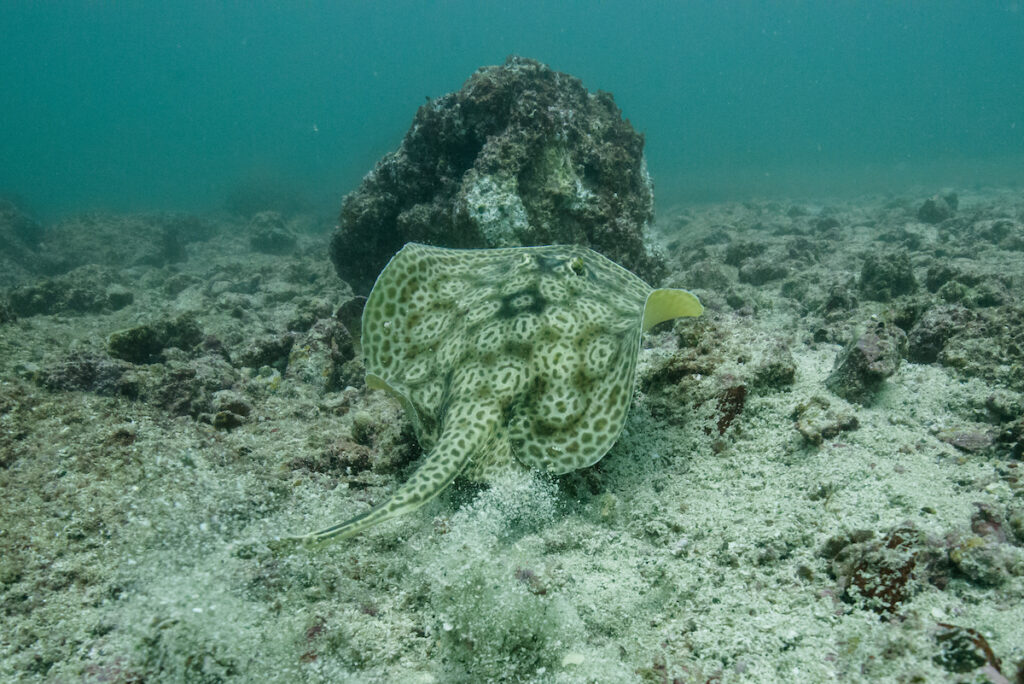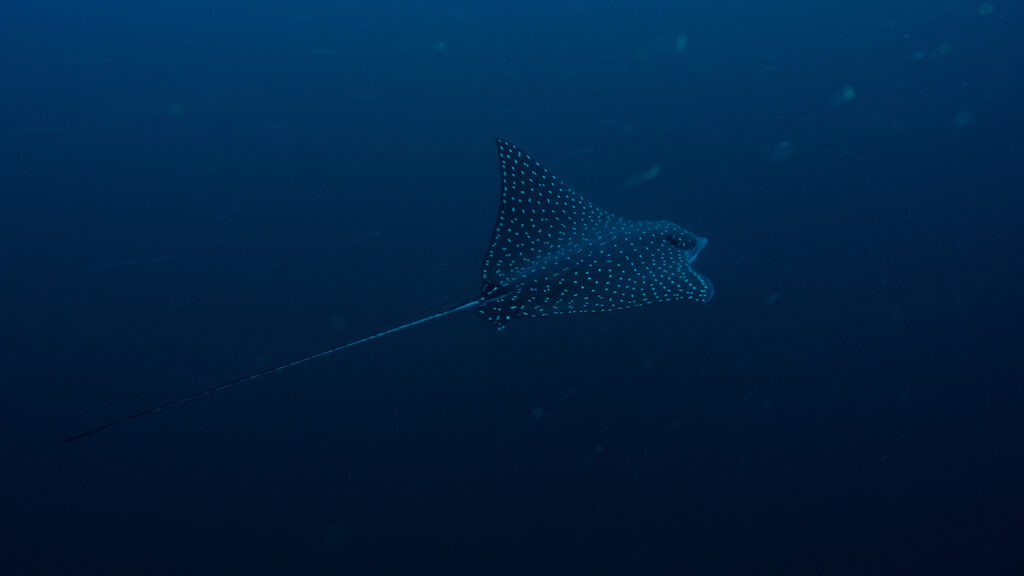All about rays and manta rays
Explore the Differences, Habitats and Curiosities of these Fascinating Sea Creatures
Discover the Fascinating Physical Characteristics of these Marine Creatures
Size, Body, Mouth and Tail
Both animals have a flattened body and wing-like fins, but there are key differences in their size, shape and body structure.

-
Manta Rays
- Size: Considerably larger, with wingspans that can exceed 7 meters and weights up to 1,500 kilograms.
- Body shape: Wide and flat body with large, triangular pectoral fins that allow them to swim elegantly.
- Mouth: Located at the front of the body, suitable for filtering plankton while swimming.
- Tail: They lack stingers; their tail is shorter and non-venomous.
-
Rays
- Size: Generally smaller than manta rays, with species ranging from 0.5 to 2 meters in width. Some, such as the whip ray (Dasyatis americana), may exceed 3 meters.
- Body shape: Flattened body with wing-like pectoral fins extending to the sides.
- Mouth: Located on the underside of the body, adapted for feeding on the seafloor.
- Tail: Many species have a venomous sting on the tail used for defense.

Meet the Most Surprising Species of these Amazing Oceans
Rays and Manta rays
There are several species of rays and manta rays with unique adaptations to their marine environment.
-
Rays
There are more than 560 species of stingrays, including the following
Whip Ray
Common in tropical and subtropical waters.
Electric Ray
Capable of generating electric shocks for defense or stunning prey.
Eagle Ray
Known for distinctive spots and wing-like pectoral fins.
-
Manta Rays
They belong to the genus “Manta” and two main species are recognized
Reef Manta Ray
It inhabits the Pacific and Indian Oceans, frequenting coral reefs.
Giant Manta Ray
Larger and found in the Atlantic, Pacific, and Indian Oceans, including open ocean areas.
Get to know some of the Life Habits of these Underwater World Impressives
Behavior, Habitat and Feeding
These animals have different living habits, reflected in their habitat, feeding habits and social behavior.
-
Rays
- Habitat: They prefer sandy or muddy seabeds, from shallow coastal waters to greater depths.
- Diet: Carnivorous; they feed on mollusks, crustaceans and small fish found on the seabed.
- Behavior: They are usually solitary and spend most of their time resting on the bottom, camouflaged with the environment.
-
Manta Rays
- Habitat: They inhabit tropical and subtropical seas worldwide, often near coral reefs and open ocean areas.
- Feeding: Filter feeders; they feed on plankton, small fish and squid, swimming with their mouths open to filter the food.
Behavior: They can form large aggregations, especially in food-rich areas, and are known for their acrobatic leaps out of the water.
Discover the Surprising Marine Traits and Secrets of these Majestic Creatures
Reproduction and Life Cycle
The reproduction of these animals is a fascinating process that varies between species, but in both cases the young are born fully formed.
-
Rays
- Reproduction: Most are ovoviviparous; embryos develop in eggs within the mother and hatch as fully formed young. Some species are oviparous and deposit eggs in capsules known as “mermaid pouches”.
Life cycle: After birth, hatchlings are independent and receive little or no parental care.
-
Manta Rays
- Reproduction: Ovoviviparous; embryos develop into eggs in the mother’s uterus and the young are born alive.
Life cycle: Females usually give birth to one or two young after a gestation period that may last several months. The young are born fully developed and are self-sufficient from birth.
Learn in Detail the Key Differences of these Surprising Animals
Size, Body, Habitat and Feeding
Although they share many similarities, stingrays and manta rays have fundamental differences that distinguish them.
Size
Which is larger?
Size
Stingrays are significantly larger than rays.
Body Parts
Mouth and Tail
Mouth and Tail
Manta rays have their mouths on the front, while stingrays have their mouths on the underside. Stingrays usually have a venomous stinger; manta rays lack a stinger.
Feeding
What do they usually eat?
Alimentación
Las mantarrayas son filtradoras de plancton; muchas rayas cazan presas en el fondo marino.
Habitat
Where do they spend most of their time?
Habitat
Stingrays usually inhabit the seafloor; manta rays swim in open water and near the surface.
Book your next adventure!
Costa Rica offers a perfect combination of adventure and natural beauty. Enjoy the rich marine biodiversity in some of the world’s best dive sites in Costa Rica and live an unforgettable experience you will remember forever.
Book your next trip and discover the underwater wonders of Costa Rica!